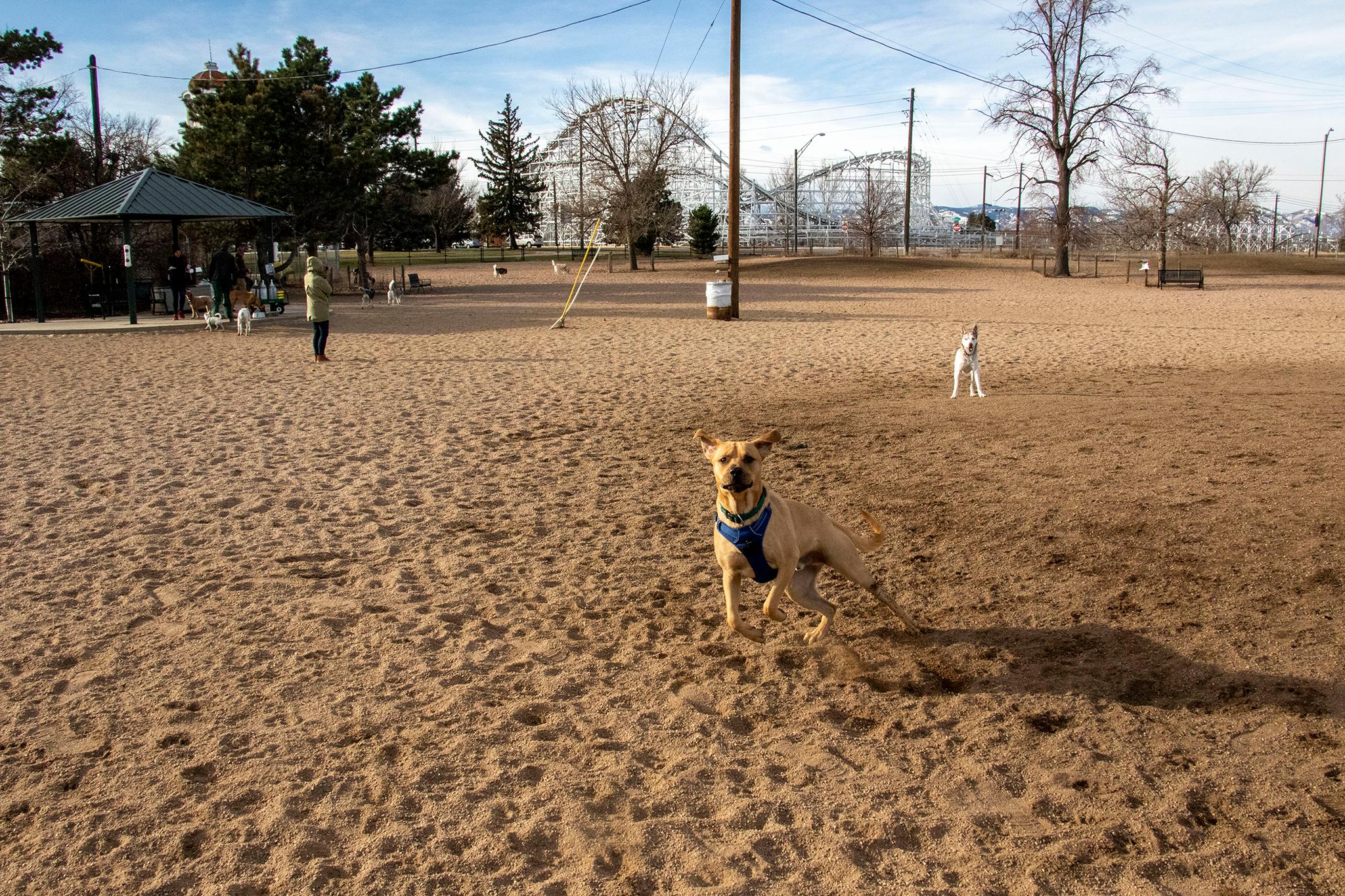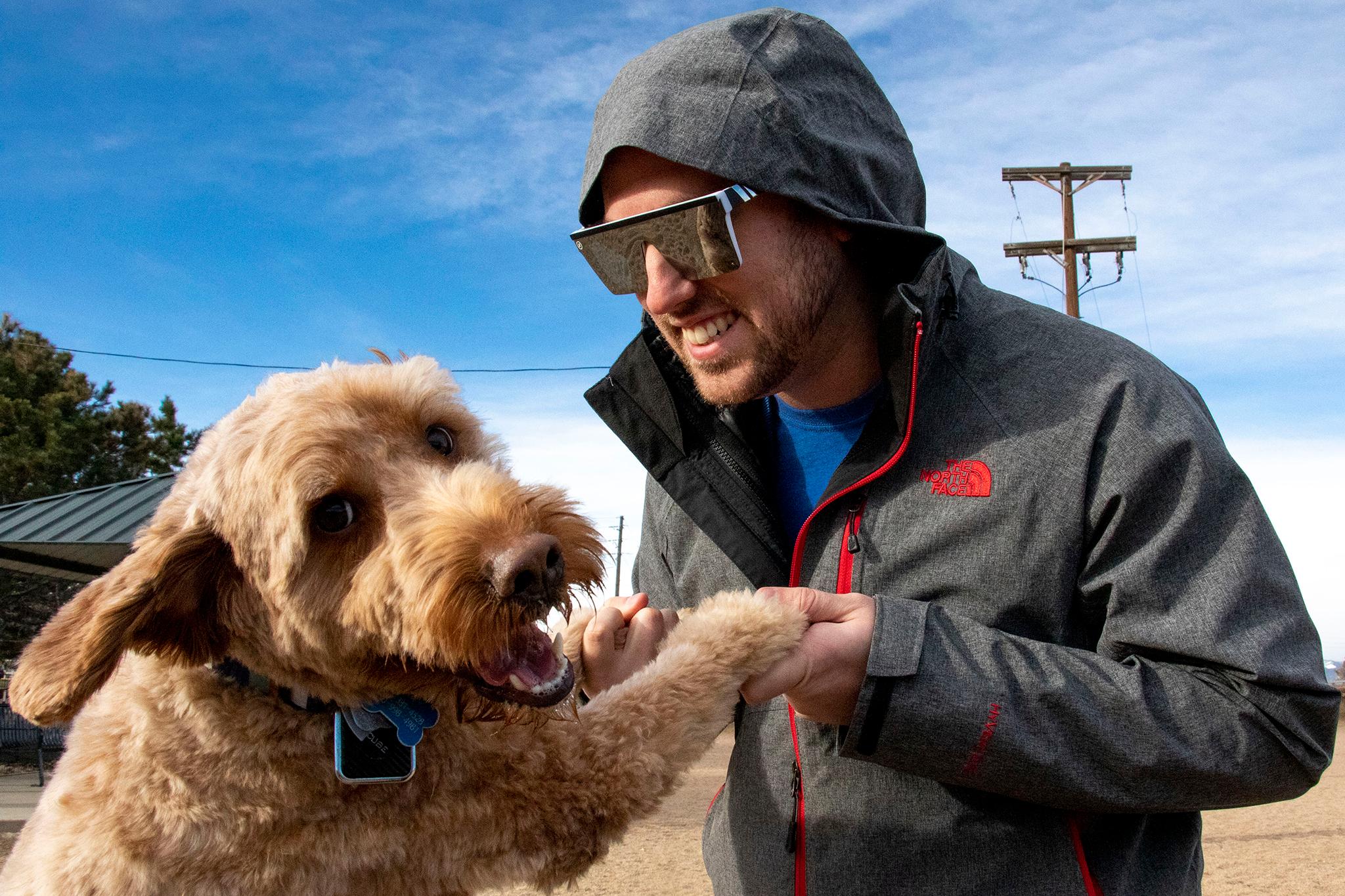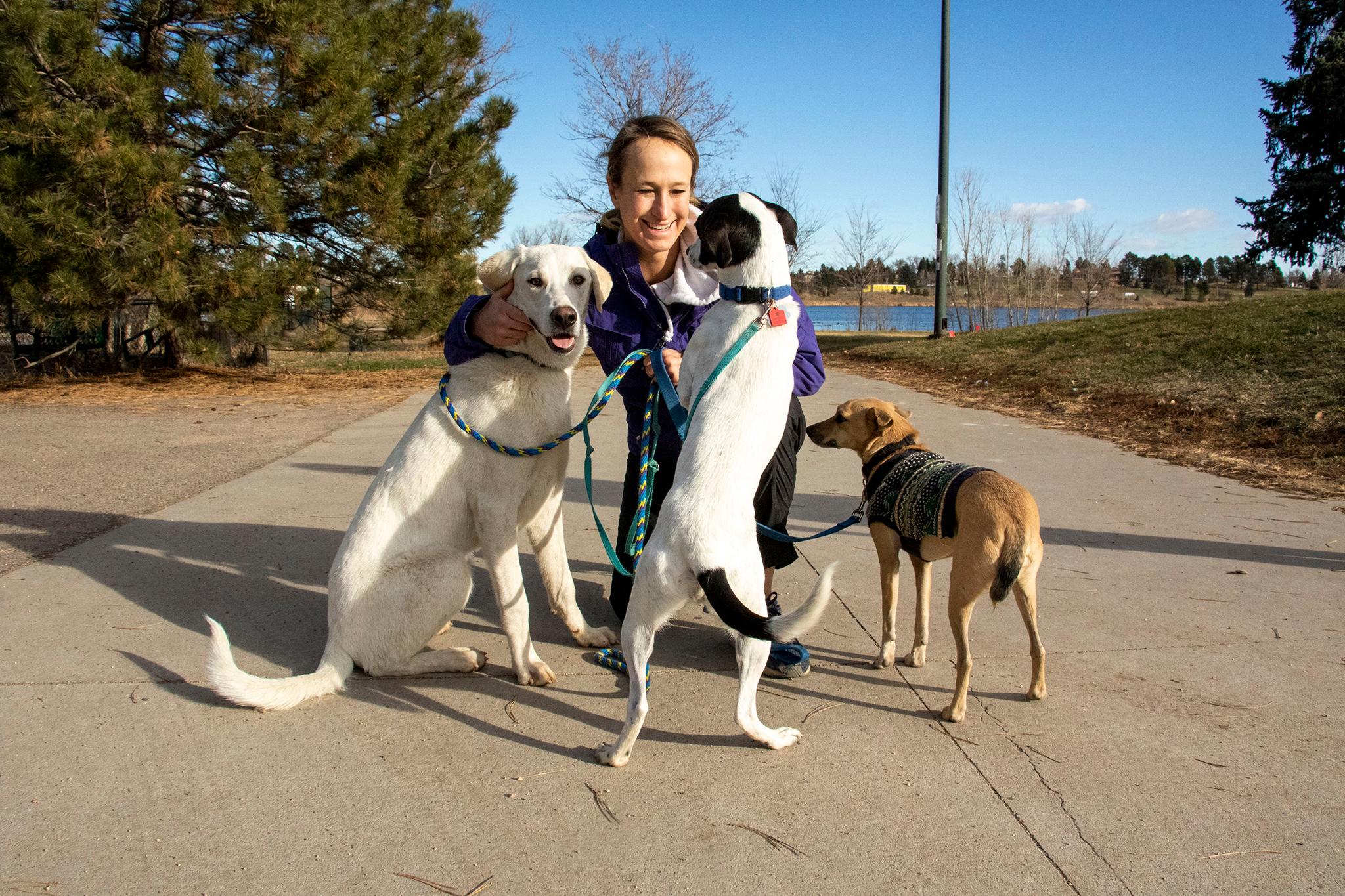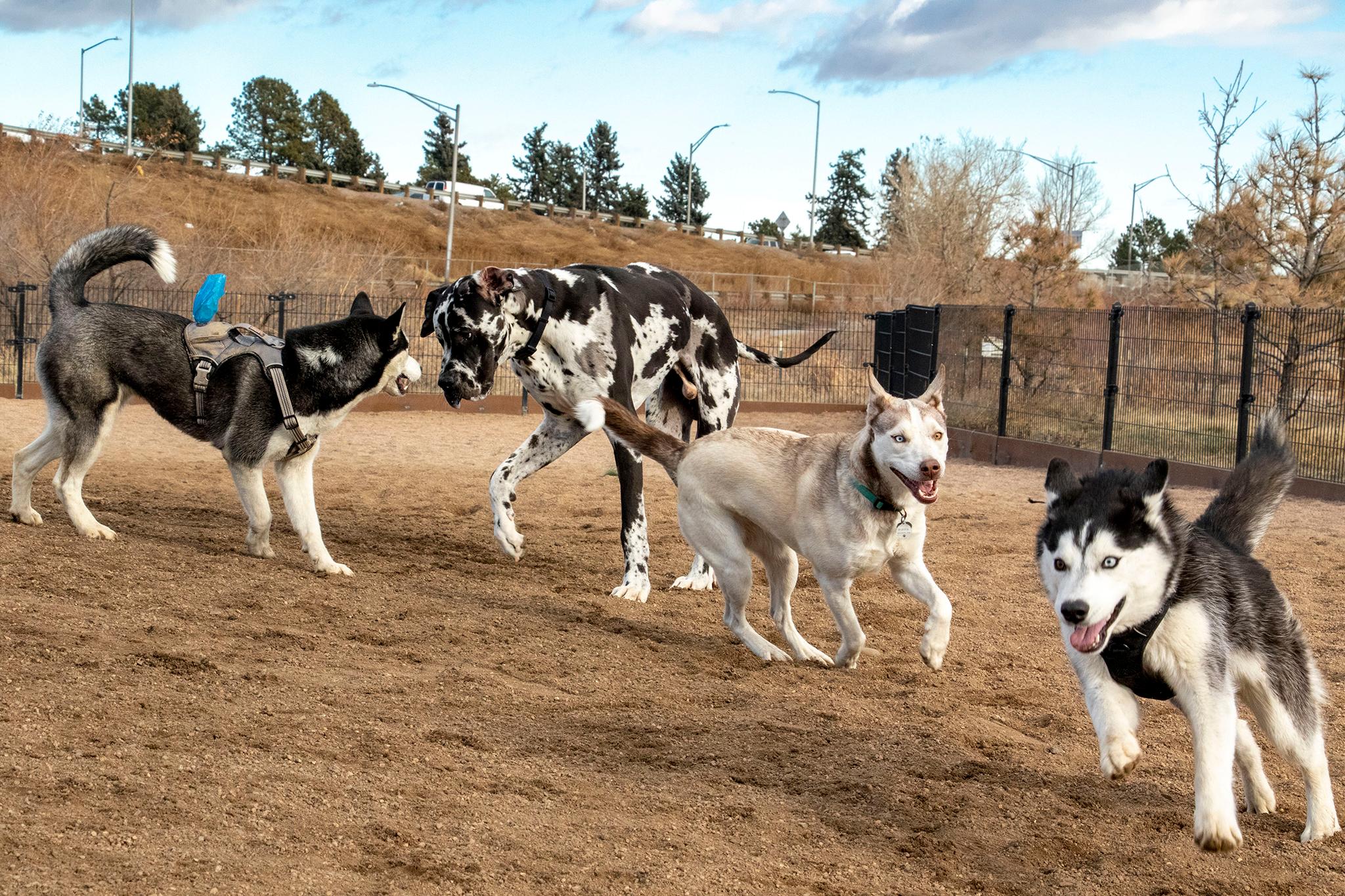City dogs wag and pant and sprint and chew while the rest of Denver grapples with growth and inequality and transportation woes and climate change.
But it turns out the city's most popular pets are inextricably tied to the urban pressures created and experienced by humans. This link may surprise you because, come on, these are just animals. But it also may not surprise you because, come on, owners buy hiking boots for them.
Denver's Dog Park Master Plan, a very real document released in October, clues us into the state of city dog parks -- dedicated fenced-in areas where dogs can romp without a leash -- and what the government's approach to our furry mini-mes says about our city.
Denver has more dogs than children.
Denver's human population boom brought with it a boom in its pawed population. Denver Parks and Recreation estimates the city's dog population at about 158,000 across 99,000 households. That's more dogs than kids. About 140,000 children live in Denver, according to the latest U.S. Census estimates.
Those dogs face a shortage of off-leash parks -- 13 total citywide covering 15.5 acres, concentrated in the city's northern half. While the Hancock administration aims to put each household within a 10-minute walk of a public park, dogs don't get such an aspirational goal because, come on, they're dogs, not children.

But Parks and Recreation does have ideas, the most fundamental being geographic equality. Most of Denver's southern half is a dog park desert.
"Moving forward, a big part is to identify those areas where we do have gaps in the system," said Kathleen LéVeque, assistant director of parks planning.
LéVeque and her colleagues know the south will host Denver's next dog park -- there's money for it from the city's parks tax -- but they're not sure exactly where it will go.
So far, dog parks tend to be in denser neighborhoods.
Like human restaurants, dry cleaners and shops, dog parks tend to exist in densely populated areas -- the more people, the more dogs, the more demand for off-leash playgrounds.
Also: more playmates.
"There's always a lot of dogs here and in Golden that's not necessarily the case," said Peggy Keck, who lives in Golden but drives to the Berkeley Dog Park wedged between Berkeley Lake and Sheridan Boulevard, because she's positive her Huskey, Luna, will find running mates.


The city considers a dog park close if it is within a 2.5-mile drive or a .75-mile walk of a given home, though walking distance ranked among the highest priorities for dog owners in a Parks and Rec survey.
Emily Markwell told Denverite she usually drives her animals to the Berkeley Dog Park, about a mile from her house. She's not alone. About 79 percent of dog owners drive to dog parks, according to the survey.
Berkeley Dog Park is the closest off-leash area for Bruno and his human, Damon Crumpley, though it's a 10-minute drive for them. And that's just fine.
"I used to live closer, but I still think it's the closest one. I come for the proximity," Cumpley said.
Dog park locations also track with gentrifying neighborhoods.
Nearly all of Denver's dog parks are in areas that have gentrified or are vulnerable to gentrification, according to a 2016 government housing study. And white families are more likely to have pets than people of color, according to the federal 2017 American Housing Survey.
A lot of people don't have dogs, so they don't want to pay for dog parks, said Laurie Tabachnick, an associate parks planner with the city. Others don't want the noise or the smell in their neighborhoods.
"We get so many requests for dog parks and almost an equal amount of people saying no to dog parks," Tabachnick said. "It's a really controversial topic."
Parks and Rec has a new public process to pinpoint exactly where unleashed dog areas will go in the future, and that process will be sensitive to gentrification, according to LéVeque.
"It is a topic that comes up and if we were to put up a dog park anywhere ... we will engage the public to find out if the local neighborhood -- what the concerns are," she said.
Denver's dog park dogs generated 3,595 gallons of dog poop in 2018.
Two things: One, that waste goes through the same journey as the rest of Denver's trash and ends up in the landfill. While Parks and Rec has talked about a system that composts the poop or uses it to generate energy, the city doesn't have that ability with its current composting and trash system.
Two, it's gross that dog waste is measured with a liquid metric.














